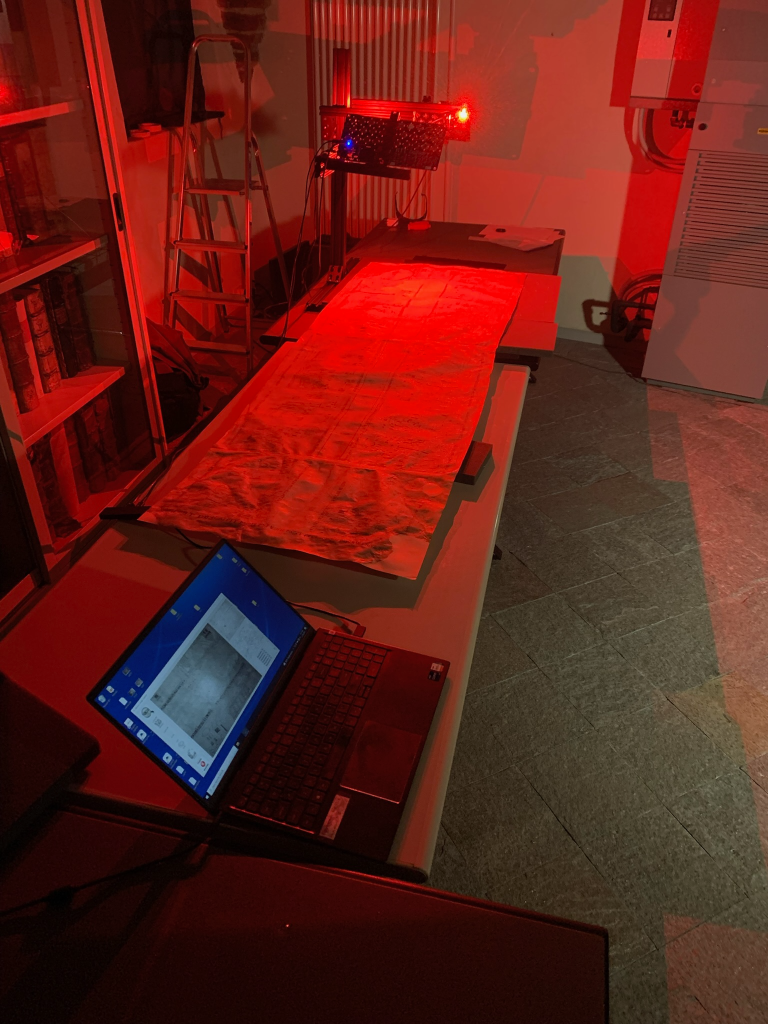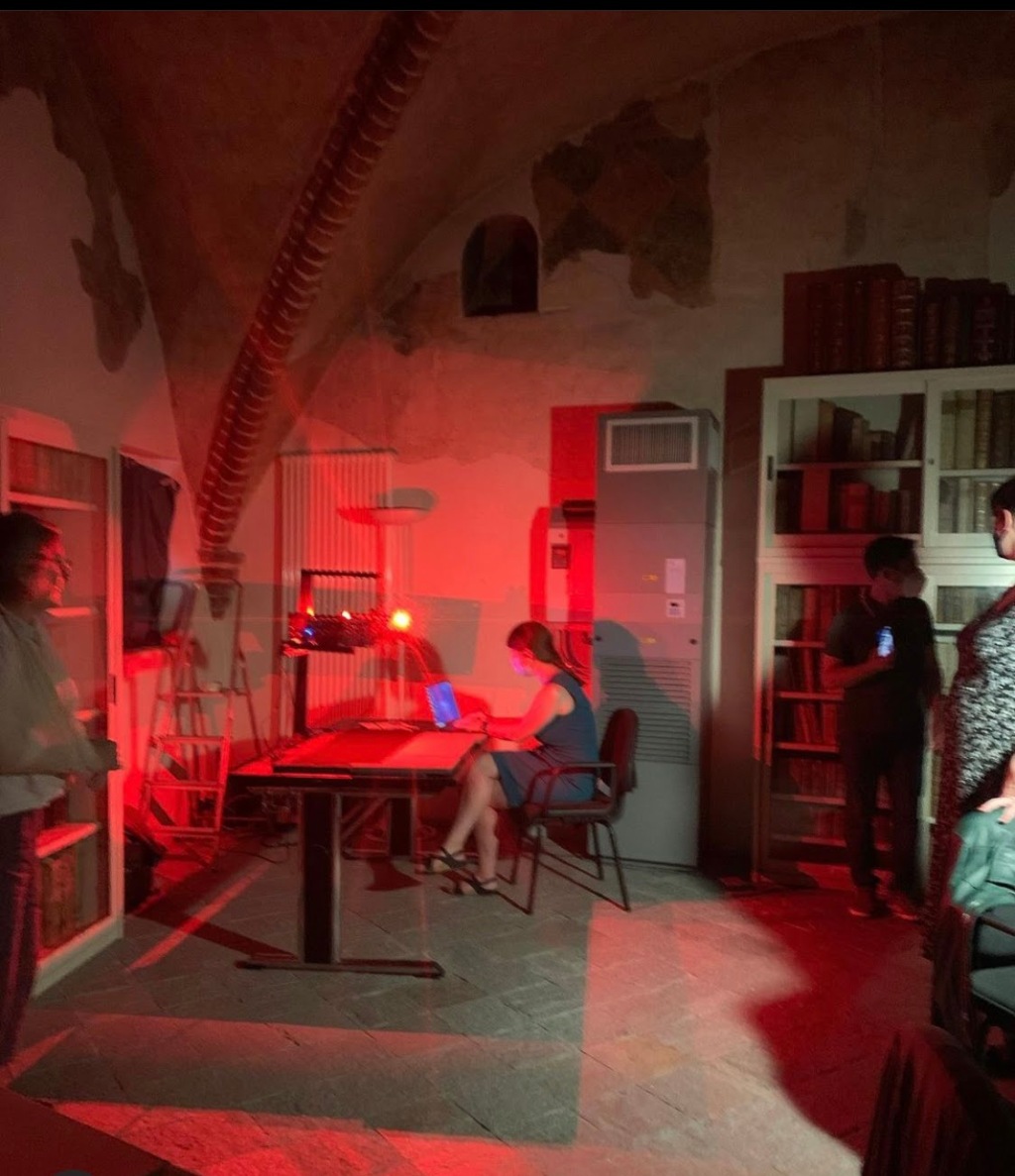Established in July 2022 in Vercelli (Italy), Videntes: A Multispectral Imaging Collective includes four scholars whose academic training varies from History and Literature, to Art History and Digital Humanities. Our teaching and professional service includes secondary and higher education, libraries and special collections, and collaborations with international project-based teams. Our teaching and professional service includes secondary and higher education, libraries and special collections, and collaborations with international project-based teams. Our name, Videntes (Latin, plural for the act of seeing), is evocative of our commitment to seeing together; to looking across disciplinary boundaries and historical chronologies, and to bringing attention to the medieval processes used to make handmade books (manuscripts) and the modern technologies that can be applied to those books and their places of use, such as multispectral imaging or photogrammetry. By seeing together we recover things lost, or unseen, and illuminate what mattered about an object in the past, argue what should matter to the present, and imagine what could matter for the future. In summer 2023 Videntes will returned to Vercelli to work in collaboration with Dr. Silvia Faccin, segratario and conservator of manuscripts for the Museo del Tesoro del Duomo e Archivio Capitolare.
What are we seeing?
-
Vercelli Map Published in Virtual Mappa Project
Read more: Vercelli Map Published in Virtual Mappa ProjectThe Virtual Mappa project now holds the publication of the badly-damaged thirteenth-century Vercelli Map. The first stage of the editing process has been completed. Included are an MSI image of the map (annotated), an RBG image (for comparison), and a general description of the map. Dr. Helen Davies and Dr. Heather Wacha have been working […]
-
What is Multispectral Imaging?
Read more: What is Multispectral Imaging?Videntes utilizes multispectral imaging to uncover hidden details on medieval artifacts, manuscripts, and paintings that were previously unseeable. This technology reveals early versions, hidden texts, and forgotten artistry, using light wavelengths to look beneath surfaces. It offers a more accurate historical perspective, unearthing forgotten works and lost content, essentially making viewers detectives in the exploration of human history.






